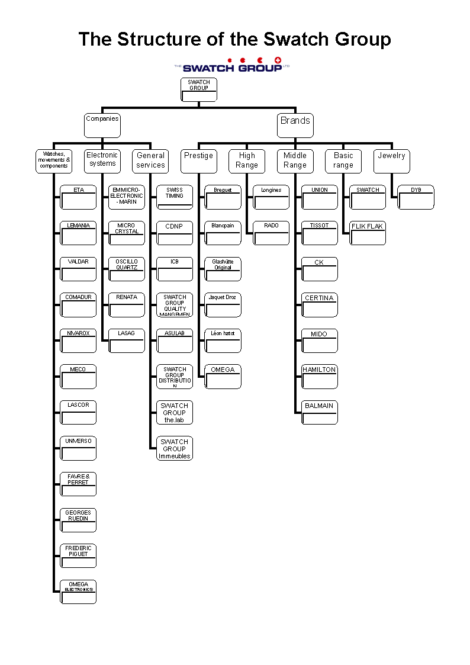
Vertical integration is a relatively rare business strategy these days. Few companies still practise it because the time has come to reduce structural costs and cut costs. Among the large groups that continue to practice it, we could mention Samsung, Swatch. Still, these dinosaurs are on the verge of extinction (whereas vertical integration can be a competitive advantage). The DNVB (Digital Native Vertical Brands) have brought this business model up to date. Below you will find a full podcast (please also read the article on DNVB) that will allow you to discover more examples of vertical integration.
Summary
- Example of vertical integration n°1: Swatch (on video)
- Example of vertical integration n°2: DNVB (with a podcast)
- Example of vertical integration n°3: Daregal
- The definition of vertical integration
Example of vertical integration n°1: Swatch
In this video, I will explain everything about vertical integration and give you the example of Swatch. The Swiss watchmaking group has been vertically integrated for two decades. I will explain to you what form this takes, its advantages but also its disadvantages.

And as a bonus I have included at the end of this article a downloadable pdf document that represents the structure of the Swatch Group (see also the low-resolution image opposite). You will find there the different watch brands of the group as well as the companies that supply parts to the whole group.
The companies listed under the “Components” branch represent the vertical integration of the group. It is these companies that constitute the real backbone of Swatch. Vertical integration depends on them.
Example of vertical integration n°2: DNVB (Digital Native Vertical Brands)
DNVB has brands that result from the marriage of vertical integration and digitisation. It is a hybrid model. We have made a podcast with Sebastien Tortu, an author of reference on the subject, which we invite you to listen to.
Example of vertical integration n°3: Daregal
At the 2012 SIAL, we met Fabrice Oger, the sales manager of Daregal, an SME with 240 employees, who provided us with an excellent example of success through vertical integration. Specialising in the aromatic herbs sector (dried and frozen), Daregal has been able to innovate in its processes but also its products. Unlike the majority of food companies, Daregal controls the entire value chain: production, selection and hybridisation of seeds are the first activities in this chain, and Fabrice explained to us for example that Daregal has a collection of 150 types of basil. Although the company does not have its fields, long-term contracts enable it to ensure consistency in production. The harvesting machines are also developed in-house, and this engineering expertise is reflected in the development of the drying and freezing processes that Daregal jealously guards.
[call-to-action-read id=”37855″]
Product and process innovations
In the case of Daregal, innovation is based on both products and processes. One of these innovations won an award at SIAL this year. From a strategic point of view (analysis of Porter’s 5 strengths) it is the result of “integration before”, that is to say, that Daregal’s core competence (frozen food) has been surpassed to offer a product with more added value to the market. In this case, it is a product ready to be consumed directly by the final consumer. What Daregal has invented is a frozen tea bag. The technology is the same as for pre-dosed rice bags (a micro-perforated plastic bag that is resistant to temperatures over 100°C). The bag contains either mint leaves or frozen basil leaves, and the result is impressive and very similar to that of fresh leaves.

Analysis
Beyond the taste aspects which do not leave the shadow of a doubt, we discussed with Fabrice Oger a possible disadvantage of this product. Where should it find its place? Is it a frozen product that will be hidden in supermarket freezers? Or is it instead, a product that has its place in the breakfast section unfortunately not equipped to accommodate frozen foods? Maybe that’s how the fate of this innovation is already sealed unless retailers are flexible enough to adapt their displays.
Vertical integration: the definition
Vertical integration allows a company to control its entire value creation chain. Usually, it is the production of the various components that go into the manufacture of a product that is concerned. But in the case of critical raw materials, vertical integration can also cover the sourcing of these raw materials. SWATCH, for example, a group which includes all market segments in the watchmaking sector but which has also been able to buy, over the years, the various suppliers of the components used in the manufacture of its watches.
There were few examples of vertical integration until it became a component of 100% digital companies: the DNVB (Digital Native Vertical Brands). These brands, which advocate direct contact with the customer, aim to control the entire value chain. Tediber is an example of DNVB).
Posted in Strategy.




